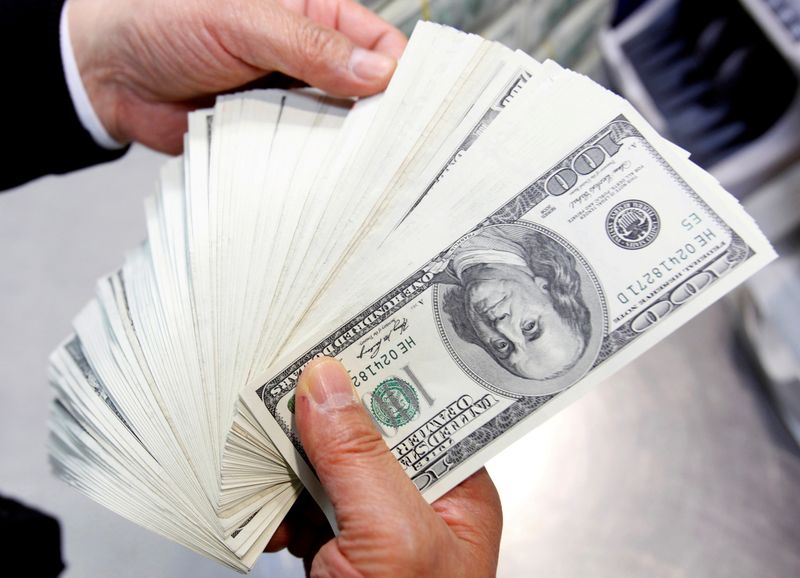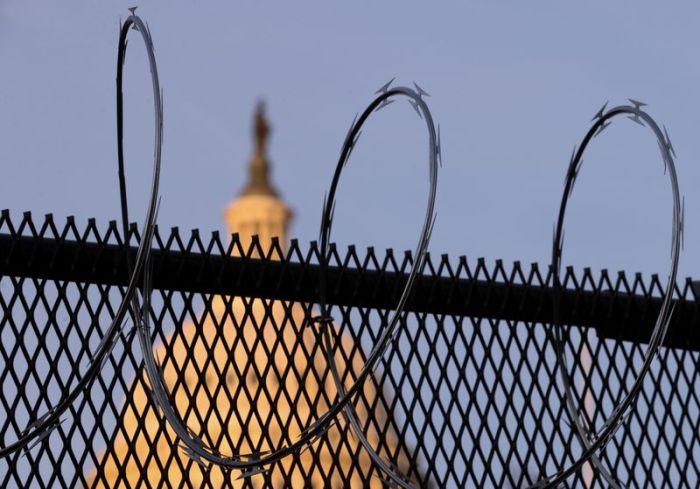NEW YORK (Reuters) -The Federal Reserve’s hawkish tilt has shaken up the bond market, with Treasuries recording their worst start to the year in history.
Yields on the U.S. benchmark 10-year Treasury, which move inversely to bond price, reached a high of 2.417% earlier this week as investors factored in a more aggressive Fed, a 90 basis point gain since the beginning of the year and its highest level since May 2019.
Many investors expect more turmoil in bonds, as soaring consumer prices push the Fed into full inflation-fighting mode. Goldman Sachs on Thursday raised its year-end forecast for the 10-year yield to 2.7% from an earlier projection of 2.25% and predicted a “modest” inversion of the Treasury yield curve, though the bank’s analyst said the phenomenon would not necessarily be indicative of an oncoming recession, as it has in the past.
Here is a quick look at the state of the Treasury market nearly three months into 2022.
The ICE BofA Treasury Index is down 5.6% this year, its worst start in history, as investors reprice a Fed that is now expected to tighten monetary policy by a further 190 basis points this year and has said could raise rates by 50 basis points at one of its upcoming meetings if warranted.
Investors worried that hawkish monetary policy could dent growth have been eyeing the shape of the Treasury yield curve, which has increasingly shown yields on some shorter-dated debt rising above yields on longer-dated debt.
An inverted yield curve is typically a sign that investors are worried about the economy and recessions have followed when yields on 2-year Treasuries have risen above those on 10-years. That part of the yield curve has so far not inverted, although the gap between yields has narrowed dramatically in recent weeks.
Analysts at Goldman Sachs said they expected that part of the yield curve to invert this year, though such a move would not necessarily signify a recession due to the current “high inflation” environment.
“In such an environment, a deeper nominal curve inversion may be needed to produce the same recession odds in models as seen in more recent business cycles,” Goldman’s analysts wrote in a recent report.
Investors also have been watching so-called real yields, or the nominal yield of a bond minus the rate of inflation.
Negative real yields on Treasuries have burnished the attractiveness of stocks and other comparatively risky assets for more than two years, helping to underpin the S&P 500’s doubling from its March 2020 lows. Yet they have started to move higher in recent weeks, reflecting the Fed’s increasingly hawkish stance. That may signal further trouble ahead for the S&P 500, which is down 5.2% this year.
The selloff in bonds likely bruised investors who had recently piled into Treasuries, a popular safe haven, as geopolitical uncertainty soared after Russia invaded Ukraine last month. The TLT iShares 20+ year Treasury bond ETF – often used by investors to express views on the government bond market – saw net inflows for the last six weeks, the longest streak in three years.
Other segments of the market appear to have been positioned for higher yields, however. CFTC data on Treasury futures, which captures positioning by hedge funds and other shorter-term market participants, shows investors have a net short position on 10-year Treasury futures since mid-October.
(Reporting by Saqib Iqbal Ahmed and Davide Barbuscia: Writing and additional reporting by Ira Iosebashvili; editing by Diane Craft)



















